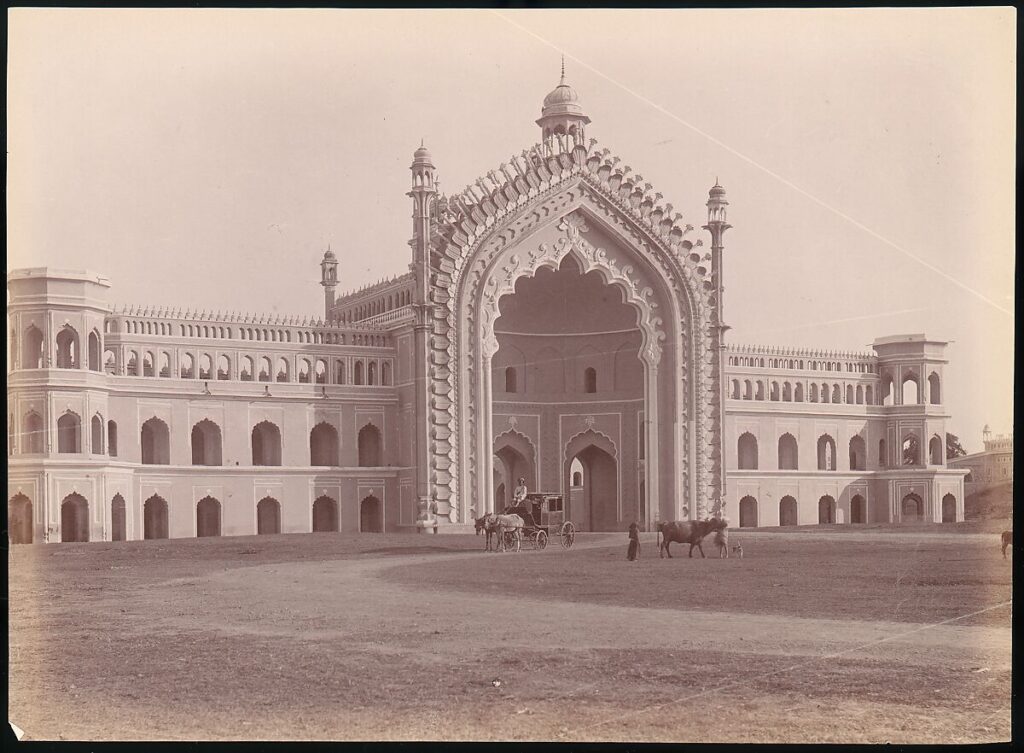Rumi Darwaza: A Gateway to History
Rumi Darwaza, or , is a remarkable piece of architecture located in the centre of Lucknow, Uttar Pradesh, India. This impressive gateway is more than just a building; it is a symbol of the area’s rich cultural and historical legacy. Let’s explore the monument’s history, architectural design, cultural significance, and surrounding elements.
Historical Background
During the reign of Nawab Asaf-ud-Daula, the fourth Nawab of Awadh, Rumi Darwaza was constructed in 1784. During his 1775–1797 rule, Nawab Asaf-ud–Daula is credited with several architectural and infrastructural developments in Lucknow. During the severe starvation of 1784, construction of Rumi Darwaza was carried out as a relief measure. In addition to giving the starving populace work, the construction project’s main goal was to build a massive entrance that would enhance the city’s splendour. Because the name “Rumi” is derived from “Rome,” it relates to the structure’s Turkish and Roman architectural influences. The gateway features a distinctive fusion of Mughal, Awadhi, and Persian architectural styles. Rumi Darwaza is characterised by its imposing height, elaborate carvings, and a large central arch flanked by two smaller arches on either side. The ornate decorations, floral patterns, and geometric designs reflect the craftsmanship of the artisans of that period.
Architectural majesty
Rumi Darwaza’s gigantic height of 60 feet is one of its most remarkable features. The gate, which combines Mughal, Awadhi, and Persian architectural styles, is a prime example of Awadhi architecture. The building is identified by a series of smaller arches that adorn the facade, a soaring central arch, and intricately designed panels. There are two smaller arches on either side of the central arch, which is called the “Rumi arch.” The entire building is decorated with geometric designs, calligraphy, and intricately carved floral patterns that highlight the skill of the artisans of that era. The gateway appears royal and pompous due to its elaborate decorations and intricate carvings. Rumi Darwaza was not just a physical entrance to the city but carried significant symbolism. The gate served as a symbol of hospitality, with the Nawabs of Awadh wanting visitors to feel welcomed as they entered Lucknow. The design and location of the gate aimed to leave a lasting impression on those approaching the city, showcasing the grandeur and cultural richness of Lucknow.

Symbolism and Significance
The Rumi Darwaza is a historical and symbolic building with much deeper meaning than its actual construction. Beyond its stunning architecture, the gate represents the various cultural influences that moulded Lucknow’s unique cultural landscape. The combination of Indian, Persian, and Turkish architectural forms symbolises the city’s welcoming and varied character. In the history of the city, the gate also served a functional purpose. It functioned as the city’s entrance and was strategically placed to represent hospitality. The Nawabs wanted guests to arrive in Lucknow feeling at home and amazed by Rumi Darwaza’s magnificence.
Impact on Culture
Rumi Darwaza has grown to be an essential component of Lucknow culture. It survived the test of centuries and continues to stand as a silent witness to the passing of time. The gate’s position in the local cultural narrative has been further cemented by its appearance in numerous literary works, poems, and historical narratives. Rumi Darwaza is frequently used as a backdrop for regional celebrations and events that honour the city’s rich cultural legacy. The monument boosts the city’s tourism sector by drawing visitors, historians, and art enthusiasts from all over the world.


Rumi Darwaza has experienced weathering, pollution, and neglect over the years. However, the authorities have worked hard to maintain and safeguard this architectural treasure. The goal of conservation and restoration efforts is to preserve Rumi Darwaza’s beauty and historical significance for future generations. In summary, Rumi Darwaza serves as a gateway to both history and the city of Lucknow. The rich tapestry of Lucknow’s past can be explored by visitors, who are drawn to this cherished landmark due to its architectural majesty, historical significance, and cultural symbolism. This enormous building’s continued presence serves as a reminder of the lasting impact of a bygone era and the necessity of protecting our cultural heritage for future generations.


